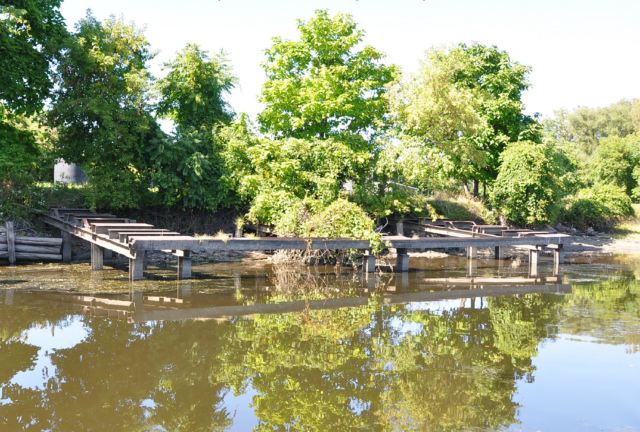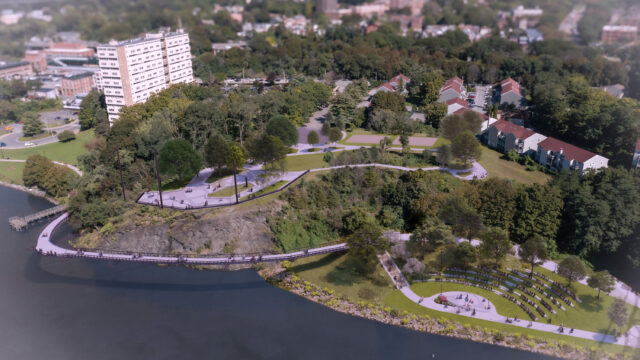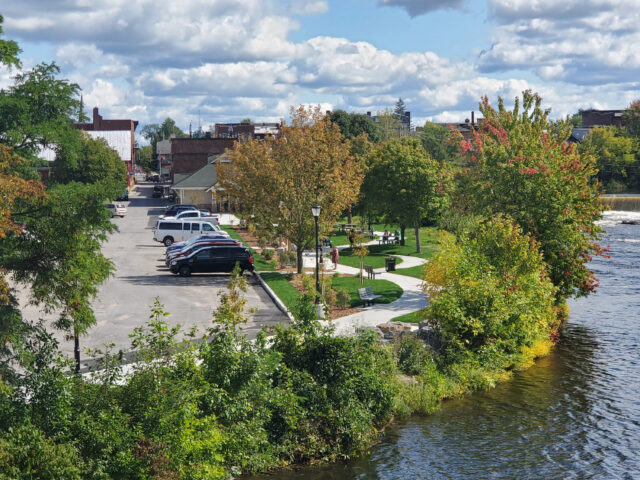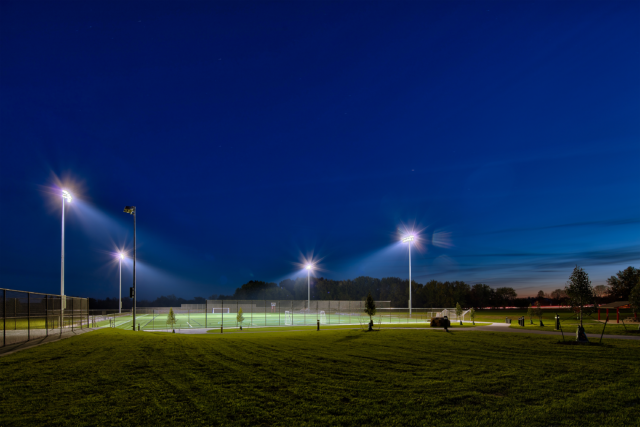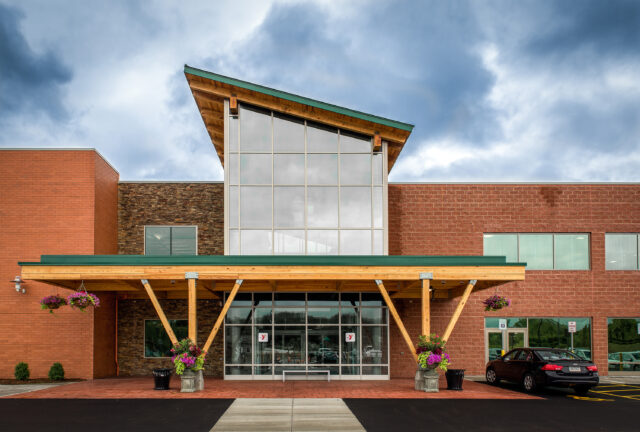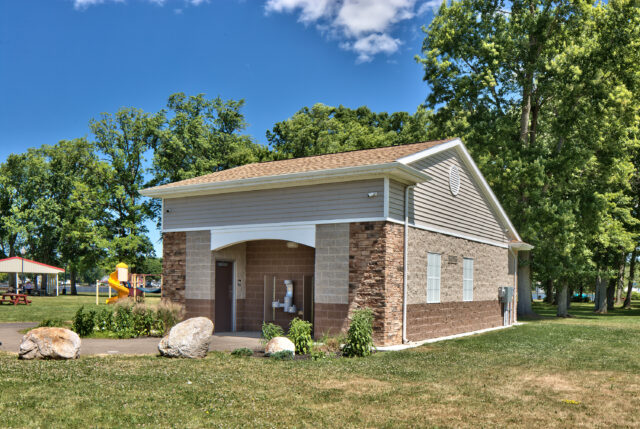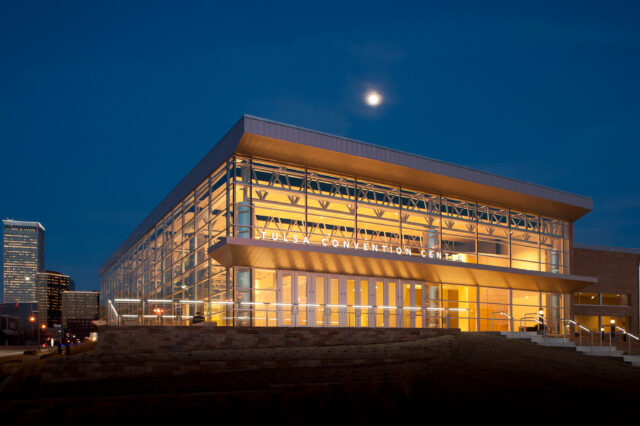
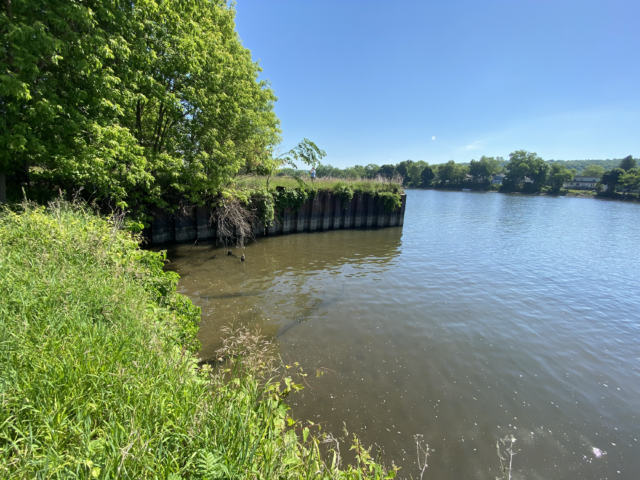
Matton Shipyard Preservation
Site and Shoreline Stabilization Preserves World War II History
Matton Shipyard, established in 1916, is located on Van Schaick Island in Cohoes, New York, at the junction of the Mohawk and Hudson Rivers. More than 340 canal boats, barges, scows, tugboats, police boats, submarine chasers, and other vessels were built by Matton up until the early 1980s. Matton had a floating dry dock dating to 1916 to offer salvage and repair services as well as a towing operation across the reach of the Barge Canal. The Matton Shipyard had a significant impact of the communities of Cohoes, Troy, and Waterford. The number of employees reached 400 during World War II and the manufacturing trade skills practiced were numerous.
Matton Shipyard retains a remarkable degree of structural integrity and has strong potential for capital improvement with direct benefits to the public, including interpretive and educational opportunities, access to the Hudson River, and commercial activities.
The site was purchased by the New York State Office of Parks, Recreation and Historic Preservation (OPRHP) in 1989 and incorporated into the Peebles Island State Park. Since 1989, the site and buildings received minimal stewardship due to limited financial and staffing resources.
The Matton Shipyard is listed on both the State and National Registers of Historic Places, is an area of precontact significance, and is contiguous to the New York State Barge Canal Historic District. The site contains several potential contamination concerns including reported spills, storage tanks, and heavy metal soil contamination from historical operations, and the Hudson River is an identified USEPA Superfund site. Finally, a bald eagle nest was reported in the vicinity of the site.
In 2016, Erie Canalway Heritage Fund began a comprehensive feasibility and master planning study that envisions opening the Matton Shipyard to the public and providing educational and other public services. LaBella was contracted to secure entitlements that would support state and federal grant funding for the stabilization and preservation of the Matton Shipyard Site for these future improvement actions. Project components included stabilizing and mothballing three existing project site structures, remediating the project site, and a shoreline restoration/protection project along the Hudson River to correct ongoing erosion issues.
LaBella’s team completed building and shoreline assessment, cost estimating for stabilization and building mothballing, developed a plan for soil remediation, completed an aquatic and ecological assessment and coordinated with Indian Nations regarding next steps. This information was combined into an initial document describing next steps and containing assessment reports, preliminary construction plans, and a SEQRA Environmental Assessment Form for the Project. LaBella coordinated the SEQRA review with OPRHP. Following this, LaBella prepared a Joint Permit Application to the Army Corps of Engineers and NYSDEC for the shoreline stabilization, along with a non-jurisdictional request to the NYSDEC for concurrence that there would not be impacts on a nearby bald eagle nest.
The Erie Canalway’s Matton Shipyard: Preservation & Adaptive Reuse Initiative was awarded over $480k in grant funding by OPRHP to implement shoreline stabilization and soil remediation. Upon securing supplemental funding and finalizing contracting, LaBella will close SEQR, obtain permits, and implement shoreline stabilization and soil remediation.

